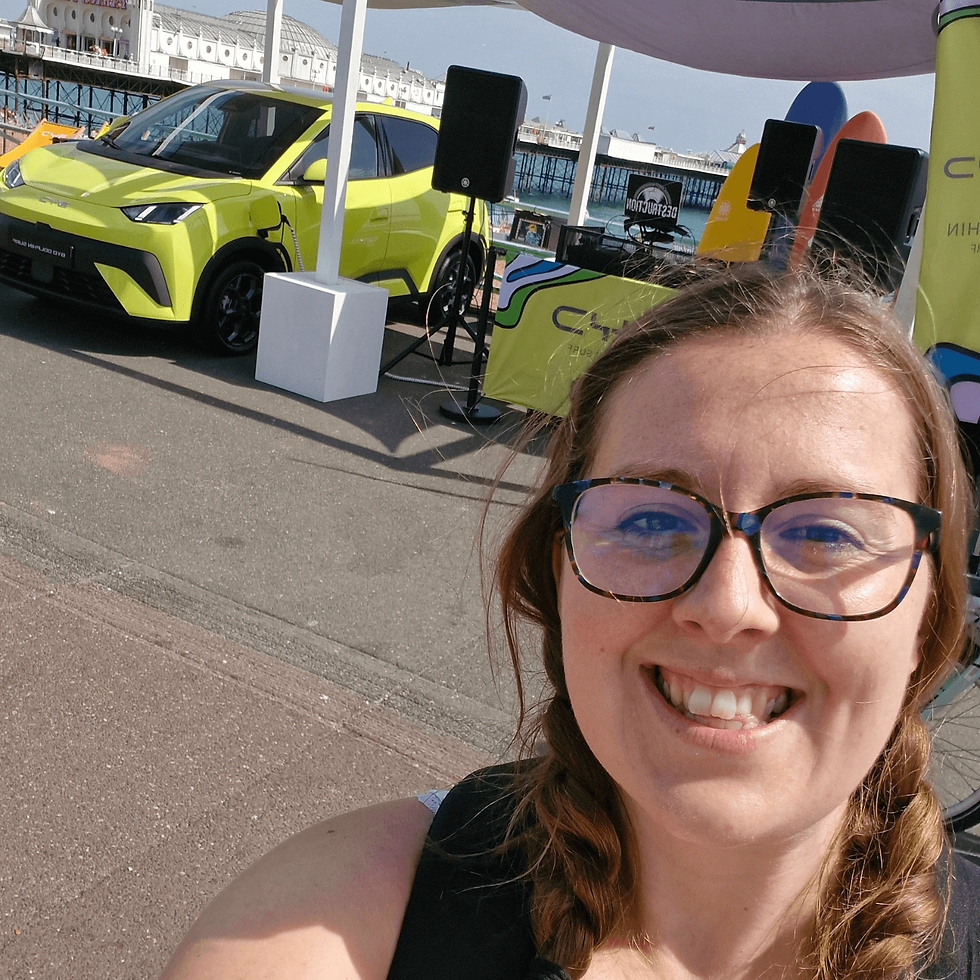Embracing Neurodiversity in the Automotive Industry
- Belinda Guy
- Aug 16
- 4 min read

It grinds my gears when people say ‘just focus.’ Living with ADHD, I know it’s not that simple, especially when juggling fast-paced projects in the automotive world. Someone once told me to get up an move around when I feel jittery - when do you draw the line though, especially if it's 95% of your day?
ADHD isn’t just about being easily distracted. It affects attention regulation, impulse control and executive functioning, all of which play a big role when managing campaigns, product launches and creative projects in the automotive sector. Now, don't get me wrong, my ADHD can be a real superpower, particularly when I'm able to focus my attention fully on my work. It also equips me with some serious coping mechanisms when chaos ensues. I'm normally the level-headed one during a crisis, despite my brain being incredibly chaotic.
I want to share what it’s really like to navigate the automotive industry with ADHD, explore the unique strengths neurodivergent individuals bring to the table and discuss how companies can build a more inclusive, innovative work environment. Even the solutions I suggest are designed to benefit everyone, whether you're neurodiverse or not.
Understanding ADHD in the automotive workspace
ADHD presents a unique set of challenges that often go unseen or undetected, especially in women. These can include:
Sensory overwhelm:
Environments with bright lights, loud noises and constant notifications can easily become overstimulating, affecting my focus and energy levels.
Rejection dysphoria:
Even minor criticism or perceived failure can feel intensely discouraging. Understanding this emotional sensitivity is crucial for managers and teams to provide constructive support, and reassurance.
Executive function hurdles:
Juggling multiple tasks, deadlines and shifting priorities can feel like running a never-ending obstacle course. Without clear objectives or requirements, it can also feel like driving without a destination but a need to get there fast.
Acknowledging these challenges is the first step toward creating a workplace that doesn’t just tolerate neurodiversity but actively supports it. I have been open and honest about my diagnosis and my journey since day one, meaning I'm well-versed in the questions, comments and concerns raised. However, doing this has made my life much easier, particularly when I can give examples of when I feel demotivated or when my colleagues can identify that I'm focusing. It's also incredibly liberating to know how you work best and in the most conducive way.

Leveraging the strengths of ADHD as a woman in automotive
While my ADHD presents it challenges, it also brings unique advantages that are incredibly valuable in my automotive marketing work. I should also caveat that, these are my experiences and many other women with ADHD may have different challenges and strengths. It's all really about getting to know someone individually.
Here are what I consider my strengths:
Enhanced moral compass
Many neurodivergent individuals, like me, have a strong sense of right and wrong, allowing us to understand customer pain points and connect authentically with buyer personas.
Creative problem-solving
ADHD brains often approach problems from unconventional angles, leading to innovative solutions. I've certainly done this a few times and can spot problematic logic a mile off! The hard part is convincing others that their way is not destined to work.
Rapid adaptability
Quick thinking in unpredictable situations is a natural strength, especially when campaigns pivot or unexpected challenges arise. You might also have to jump on urgent product changes or communications, by-passing whatever you were originally doing.
Hyperfocus on passion projects
When engaged, ADHD professionals can dive deep and produce high-quality work with intense focus. You'll realise that the reason I created Belinda Automotive was also, selfishly, to help channel my automotive passions.
Channeling ADHD energy
Managing my ADHD isn’t about suppressing energy, it’s about channeling it effectively. Personally, I channel my pent-up energy in multiple ways:
I immerse myself in the automotive industry outside of work, attending events, researching trends and exploring innovations.
I maintain a variety of hobbies that challenge my mind and body, providing productive outlets for creativity and energy.
I pursue continuous learning, seeking new topics and skills that keep my mind engaged.
I ensure I get at least 10,000 steps a day, combining movement with mental clarity to stay energised and focused.
By channeling energy into constructive outlets, I’m able to transform what could be distractions into productivity, creativity and personal growth. Managing ADHD is not about fighting your brain - it’s about understanding it and using it to your advantage.

Creating an inclusive automotive workplace
Inclusion goes beyond basic accommodations. It’s about creating an environment where neurodiverse employees can thrive. Some inclusive measures to support all employees could be:
Flexible work arrangements: Allow remote work, flexible hours or task batching to manage sensory overload and energy levels.
Clear communication: Structured updates and transparent feedback reduce stress linked to rejection dysphoria.
Neurodiversity awareness training: Educate teams about ADHD, sensory sensitivities and emotional nuances.
Leverage strengths: Encourage employees to connect their moral compass and empathy with customer engagement strategies.
Implementing these strategies helps companies retain top talent, improve engagement and cultivate authentic connections with customers.
Moving beyond stereotypes
Neurodiversity isn’t a limitation, it’s a source of insight, creativity and connection. When automotive teams embrace neurodivergent talent, they innovate more effectively and understand their customers on a deeper level.
By acknowledging sensory overwhelm, emotional sensitivity and the ability to empathise deeply with buyer personas, teams can design campaigns that resonate and workplaces that empower.
For more on my ADHD story, follow me on LinkedIn.



Comments